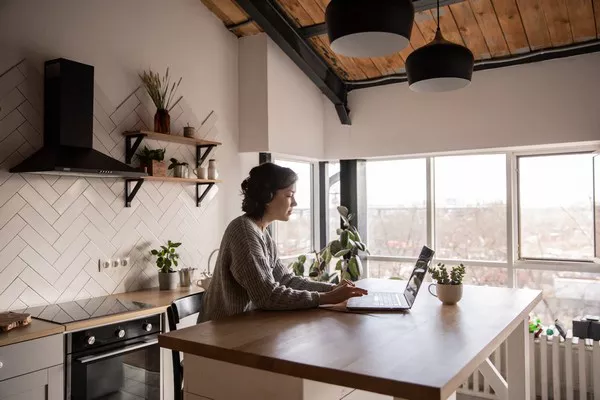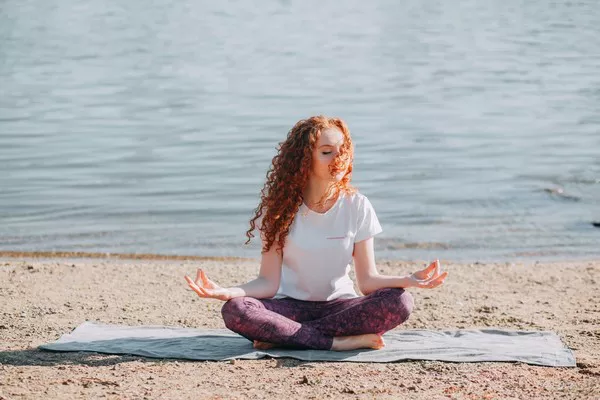Anxiety attacks can be overwhelming and frightening experiences. They often come on suddenly and can leave you feeling helpless. Understanding how to manage and calm yourself during an anxiety attack is essential for regaining control. This article will explore what anxiety attacks are, their symptoms, effective strategies for calming yourself, and long-term techniques to reduce anxiety.
Understanding Anxiety Attacks
What is an Anxiety Attack?
An anxiety attack, often referred to as a panic attack, is a sudden episode of intense fear or discomfort. It typically peaks within minutes and can last for several minutes. While anxiety attacks can be distressing, they are not life-threatening. However, they can feel very real and frightening.
Common Symptoms of Anxiety Attacks
Anxiety attacks can manifest through a variety of physical and emotional symptoms. Here are some common symptoms:
Rapid Heartbeat: You may feel your heart racing or pounding in your chest.
Shortness of Breath: You might feel like you cannot breathe or are choking.
Chest Pain: Some people experience tightness or pain in their chest.
Sweating: Excessive sweating is a common symptom during an attack.
Trembling or Shaking: You may notice your hands or body shaking.
Feeling Dizzy or Lightheaded: A sense of dizziness or faintness can occur.
Nausea or Stomach Upset: Some people feel sick to their stomach during an attack.
Chills or Hot Flashes: You may experience sudden changes in body temperature.
Fear of Losing Control or Dying: A feeling of impending doom is common during an attack.
These symptoms can be distressing and often lead to a fear of having another attack, creating a cycle of anxiety.
Why Anxiety Attacks Happen
Understanding the triggers of anxiety attacks can help you manage them better. Here are some common causes:
1. Stressful Life Events
Major life changes or stressful events, such as moving, job loss, or the death of a loved one, can trigger anxiety attacks.
2. Health Issues
Certain medical conditions, such as hyperthyroidism or heart problems, can cause symptoms similar to anxiety attacks. It is essential to rule out any underlying health issues.
3. Substance Use
Caffeine, alcohol, and recreational drugs can increase anxiety levels and trigger attacks.
4. Genetic Factors
Anxiety disorders can run in families. If you have a family history of anxiety, you may be more prone to experiencing anxiety attacks.
5. Mental Health Disorders
Conditions such as generalized anxiety disorder (GAD), panic disorder, or post-traumatic stress disorder (PTSD) can increase the likelihood of experiencing anxiety attacks.
Strategies to Calm Yourself During an Anxiety Attack
When you feel an anxiety attack coming on, it is crucial to have strategies in place to help you calm down. Here are some effective techniques:
1. Deep Breathing Exercises
Deep breathing is one of the most effective ways to calm your body during an anxiety attack. Here’s how to do it:
Find a Comfortable Position: Sit or lie down in a comfortable position.
Inhale Slowly: Breathe in deeply through your nose for a count of four. Focus on filling your lungs completely.
Hold Your Breath: Hold your breath for a count of four.
Exhale Slowly: Breathe out slowly through your mouth for a count of six. Imagine releasing all the tension with your breath.
Repeat: Continue this cycle for several minutes until you feel calmer.
Deep breathing helps reduce the physical symptoms of anxiety and allows you to regain control.
2. Grounding Techniques
Grounding techniques can help bring your focus back to the present moment. Here are a few methods:
5-4-3-2-1 Technique: This technique involves using your senses to ground yourself. Identify:
5 things you can see: Look around and name five objects.
4 things you can touch: Notice the texture of objects around you.
3 things you can hear: Listen for sounds in your environment.
2 things you can smell: Identify two scents in your surroundings.
1 thing you can taste: Focus on the taste in your mouth or take a sip of water.
Focus on Your Feet: Feel your feet on the ground. Notice the sensations and the weight of your body. This can help anchor you in the present.
3. Positive Affirmations
Using positive affirmations can help shift your mindset during an anxiety attack. Here are some affirmations to consider:
- “I am safe and in control.”
- “This feeling is temporary and will pass.”
- “I can handle this.”
Repeat these affirmations to yourself during an attack. They can help counter negative thoughts and provide reassurance.
4. Visualization Techniques
Visualization can be a powerful tool for calming anxiety. Here’s how to use it:
Close Your Eyes: Find a quiet space and close your eyes.
Imagine a Peaceful Scene: Picture a place where you feel safe and relaxed, such as a beach, forest, or your favorite room.
Engage Your Senses: Visualize the details of this place. What do you see? Hear? Smell? Feel? Immerse yourself in the experience.
Visualization can help transport your mind away from the anxiety and into a place of calm.
5. Engage in Physical Activity
Physical activity can help reduce anxiety and improve your mood. Here are some ideas:
Go for a Walk: A short walk outside can help clear your mind and release pent-up energy.
Stretch: Gentle stretching can help release tension in your body.
Practice Yoga: Yoga combines movement with breath, making it an effective way to calm anxiety.
Engaging in physical activity can help distract you from anxious thoughts and promote relaxation.
6. Use Aromatherapy
Aromatherapy can provide calming effects during an anxiety attack. Here’s how to use it:
Essential Oils: Consider using essential oils such as lavender, chamomile, or bergamot. You can use a diffuser, apply diluted oils to your skin, or inhale directly from the bottle.
Scented Candles: Light a scented candle with calming scents. Focus on the smell and the warmth of the flame.
Aromatherapy can create a soothing environment and help reduce anxiety.
7. Practice Mindfulness
Mindfulness involves being present in the moment without judgment. Here’s how to practice mindfulness during an anxiety attack:
Focus on Your Breath: Pay attention to your breathing. Notice the sensation of the air entering and leaving your body.
Observe Your Thoughts: Acknowledge your thoughts without judgment. Recognize that they are just thoughts and do not define you.
Let Go: Allow your thoughts to pass without clinging to them. Imagine them floating away like clouds in the sky.
Mindfulness can help you detach from anxious thoughts and reduce their intensity.
8. Talk to Someone
Sometimes, simply talking to someone can help alleviate anxiety. Here’s how to reach out for support:
Call a Friend or Family Member: Share your feelings with someone you trust. Talking about your experience can help you feel less alone.
Use a Support Line: If you cannot reach someone, consider calling a mental health support line. Trained professionals can provide guidance and support.
Talking to someone can help you process your feelings and gain perspective.
9. Create a Safe Space
Having a designated safe space can help you feel more secure during an anxiety attack. Here’s how to create one:
Choose a Quiet Location: Find a place where you feel comfortable and safe, such as your bedroom or a cozy corner in your home.
Personalize It: Add items that bring you comfort, such as soft blankets, pillows, or calming decorations.
Keep It Accessible: Ensure that this space is easily accessible when you feel an anxiety attack coming on.
A safe space can provide you with a retreat during moments of anxiety.
10. Use Distraction Techniques
Distraction techniques can help take your mind off the anxiety. Here are some ideas:
Listen to Music: Play your favorite calming music or uplifting songs. Focus on the lyrics and melodies.
Watch a Movie or Show: Engaging in a movie or TV show can provide a temporary escape from anxious thoughts.
Read a Book: Immerse yourself in a book to divert your attention from anxiety.
Distraction can help break the cycle of anxious thinking.
11. Limit Caffeine and Sugar
Caffeine and sugar can exacerbate anxiety symptoms. Here’s how to manage your intake:
Reduce Caffeine Consumption: Limit your intake of coffee, tea, and energy drinks, especially in the hours leading up to an anxiety-prone situation.
Choose Healthy Snacks: Opt for nutritious snacks that provide sustained energy, such as fruits, nuts, and whole grains.
Managing your diet can help stabilize your mood and reduce anxiety.
12. Develop a Long-Term Plan
While the above techniques can help during an anxiety attack, developing a long-term plan for managing anxiety is essential. Here are some strategies to consider:
Therapy: Consider seeking therapy, such as cognitive-behavioral therapy (CBT), which can help you understand and manage anxiety more effectively.
Medication: If anxiety attacks are frequent and severe, consult a healthcare professional about medication options.
Regular Exercise: Incorporate regular physical activity into your routine. Exercise is known to reduce anxiety and improve overall well-being.
Mindfulness Practice: Engage in regular mindfulness or meditation practices to build resilience against anxiety.
Healthy Lifestyle: Prioritize a balanced diet, adequate sleep, and stress management techniques in your daily life.
Developing a comprehensive plan can help you manage anxiety in the long run.
Conclusion
Anxiety attacks can be overwhelming, but there are effective strategies to help you calm down during these moments. Understanding the nature of anxiety attacks and recognizing their symptoms is the first step in managing them. By employing techniques such as deep breathing, grounding exercises, positive affirmations, and mindfulness, you can regain control over your emotions during an attack.
Additionally, creating a safe space, reaching out for support, and practicing healthy lifestyle choices can contribute to long-term anxiety management. Remember that it is okay to seek professional help if anxiety attacks persist or interfere with your daily life.
By implementing these strategies and developing a long-term plan, you can empower yourself to face anxiety with confidence and resilience. You are not alone in this journey, and with the right tools, you can navigate anxiety attacks and lead a fulfilling life.
Related topics:






















